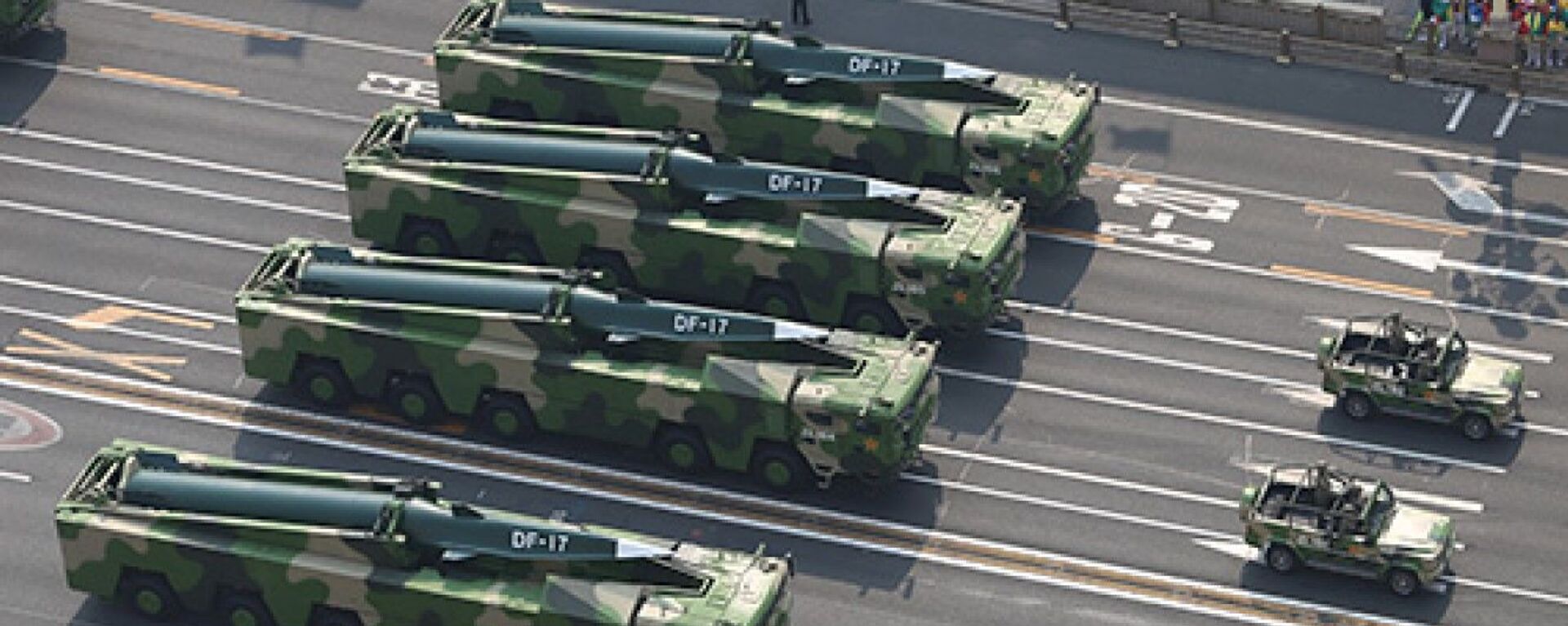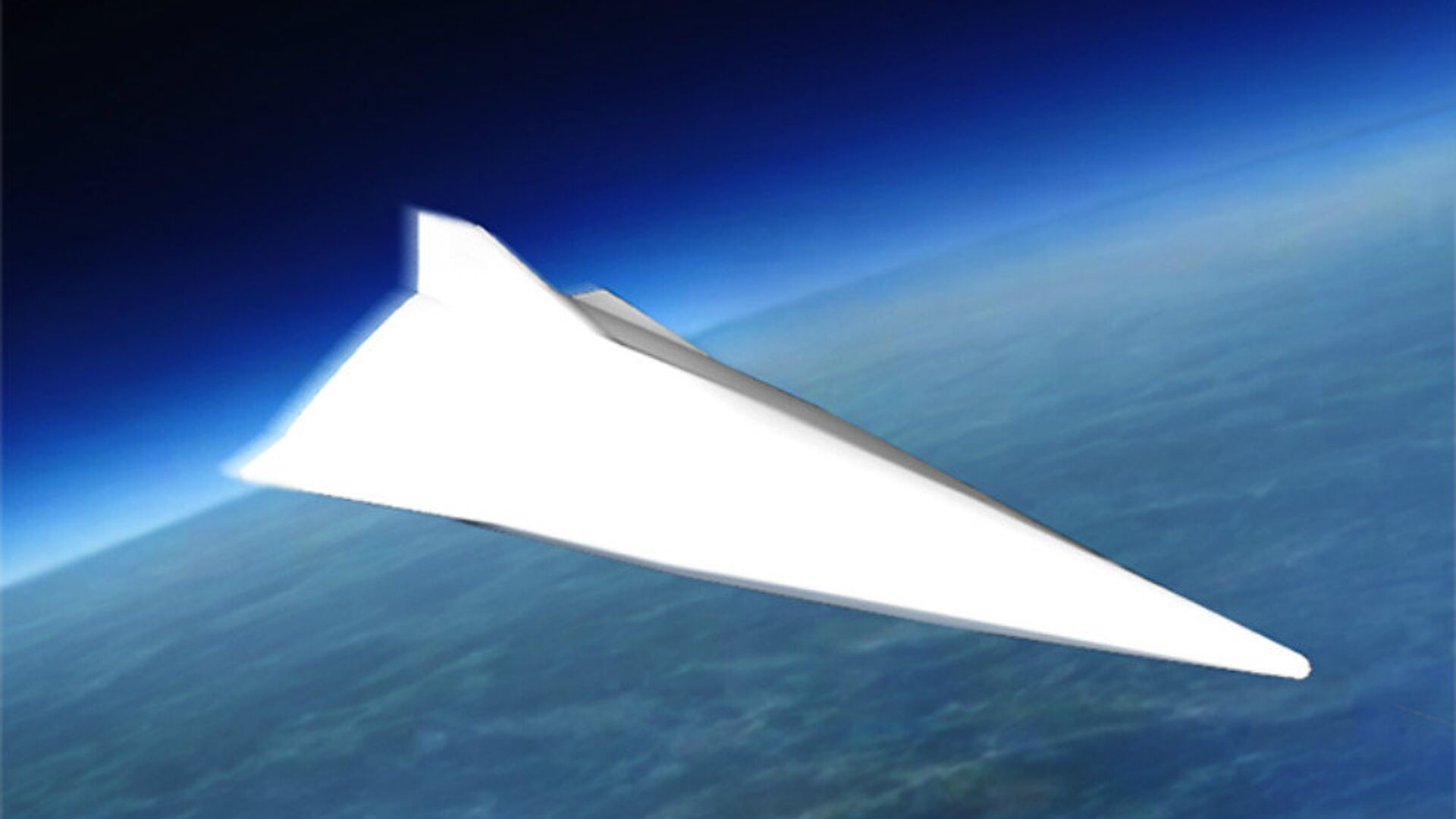https://sputnikglobe.com/20211018/china-may-boost-accuracy-of-its-hypersonic-weapons-via-ai-technology-report-says-1090004202.html
China May Boost Accuracy of Its Hypersonic Weapons Via AI Technology, Report Says
China May Boost Accuracy of Its Hypersonic Weapons Via AI Technology, Report Says
Sputnik International
Chinese PLA researchers are reportedly seeking to improve the accuracy of the country's hypersonic delivery systems via artificial intelligence, according to... 18.10.2021, Sputnik International
2021-10-18T11:06+0000
2021-10-18T11:06+0000
2021-10-18T11:06+0000
newsfeed
world
military & intelligence
us
asia
china
hypersonic missiles
artificial intelligence
financial times
hypersonic weapons
https://cdn1.img.sputnikglobe.com/img/106188/72/1061887212_0:182:1001:745_1920x0_80_0_0_465f9e4e714b15f4f8d89ef5c3165013.jpg
Chinese Foreign Ministry spokesman Zhao Lijian on Monday refuted a report by the Financial Times saying that the country conducted a hypersonic missile test in August. First, it was not a missile but a space vehicle; second, the trials took place in July, Zhao specified.Earlier, FT dropped a bombshell by claiming that China had tested a nuclear-capable hypersonic weapon. According to the report, the Chinese military launched a rocket carrying a hypersonic glide vehicle that circled the Earth through low-orbit space before cruising towards its target.Beijing's recent statement does not mean, however, that China's hypersonic missile research has not been going at full throttle. On 14 October, Stephen Chen, the South China Morning Post's Beijing-based senior reporter who investigates major research projects in China, reported that People's Liberation Army (PLA) scientists are seeking to step up the accuracy of hypersonic weapons via the usage of artificial intelligence (AI).Chen quoted a research paper by Xian Yong and Li Bangjie, from the Rocket Force Engineering University's College of War Support, who proposed giving the weapon more decision-making power. This could step up the weapon's overall positioning accuracy "by one to two orders of magnitude", according to the researchers. Given that a hypersonic carrier has to travel up to thousands miles to deliver its load while making complex manoeuvres during the flight, this depends on how precisely it can determine its position.Yet, the weapon's built-in inertial sensors are typically subjected to physical disturbances during assembly, transport, and routine maintenance, argued Xian and Li. In addition, powering the hypersonic weapon up may cause further deviations from its factory settings and subsequently affect its precision capabilities, according to the study.To fix this problem, Xian and Li's team proposed replacing the factory settings with AI technology. The AI would start working once the weapon is launched and "write" the weapon's software "on the fly". It would calculate the missile's position using the signal from the GPS or the BeiDou Navigation Satellite System and compare it with the results generated by the on-board sensors. By using this data, the AI would create a unique positioning algorithm for the weapon's flight control programme.The SCMP reporter remarked that while the speed of the processors used in China's hypersonic military programme is classified, their performance is said to be increasing steadily.Several years ago, the Chinese media also discussed the development of a family of cruise missiles with artificial intelligence (AI) capabilities. On 21 September 2016, The Diplomat examined these reports arguing that the Chinese sources provide no insight into the specific nature of the autonomous technology. At that time, The Diplomat expressed scepticism about the use of AI technology in cruise missiles, admitting, however, that AI "is considered indispensable in the development of new-age naval weapons, in particular hypersonic missiles".In 2020, the Washington-based Brookings Institution issued a review emphasising "significant investments in robotics, swarming, and other applications of artificial intelligence (AI) and machine learning (ML)" in China's PLA. The report noted that the PLA's official dictionary included a definition of an "AI weapon" as early as in 2011.However, China's military AI programmes remain top secret prompting the authors of the report to acknowledge that "the PLA's trajectory in the development and potential employment of AI/ML-enabled and autonomous weapons systems remains uncertain" while "the maturity of these capabilities… cannot be assessed with high confidence at this point".
https://sputnikglobe.com/20211017/stop-poking-the-dragon-chinas-hypersonic-missiles-can-reach-us--uk-in-blink-of-eye-netizens-say-1089986994.html
https://sputnikglobe.com/20211013/already-over--ex-pentagon-official-claims-china-has-bested-us-in-artificial-intelligence-battle-1089877967.html
china
Sputnik International
feedback@sputniknews.com
+74956456601
MIA „Rossiya Segodnya“
2021
News
en_EN
Sputnik International
feedback@sputniknews.com
+74956456601
MIA „Rossiya Segodnya“
Sputnik International
feedback@sputniknews.com
+74956456601
MIA „Rossiya Segodnya“
newsfeed, military & intelligence, us, china, hypersonic missiles, artificial intelligence, financial times, hypersonic weapons, hypersonic glider
newsfeed, military & intelligence, us, china, hypersonic missiles, artificial intelligence, financial times, hypersonic weapons, hypersonic glider
China May Boost Accuracy of Its Hypersonic Weapons Via AI Technology, Report Says
Chinese PLA researchers are reportedly seeking to improve the accuracy of the country's hypersonic delivery systems via artificial intelligence, according to the South China Morning Post.
Chinese Foreign Ministry spokesman Zhao Lijian on Monday refuted a report by the Financial Times saying that the country conducted a hypersonic missile test in August. First, it was not a missile but a space vehicle; second, the trials took place in July, Zhao specified.
Earlier,
FT dropped a bombshell by claiming that
China had tested a nuclear-capable hypersonic weapon. According to the report, the Chinese military launched a rocket carrying a hypersonic glide vehicle that circled the Earth through low-orbit space before cruising towards its target.
Beijing's recent statement does not mean, however, that China's hypersonic missile research has not been going at full throttle. On 14 October, Stephen Chen, the
South China Morning Post's Beijing-based senior reporter who investigates major research projects in China,
reported that People's Liberation Army (PLA) scientists are seeking to step up the accuracy of hypersonic weapons via the usage of artificial intelligence (AI).

17 October 2021, 14:33 GMT
Chen quoted a research paper by Xian Yong and Li Bangjie, from the Rocket Force Engineering University's College of War Support, who proposed giving the weapon more decision-making power. This could step up the weapon's overall positioning accuracy "by one to two orders of magnitude", according to the researchers. Given that a hypersonic carrier has to travel up to thousands miles to deliver its load while making complex manoeuvres during the flight, this depends on how precisely it can determine its position.
Yet, the weapon's built-in inertial sensors are typically subjected to physical disturbances during assembly, transport, and routine maintenance, argued Xian and Li. In addition, powering the hypersonic weapon up may cause further deviations from its factory settings and subsequently affect its precision capabilities, according to the study.
To fix this problem, Xian and Li's team proposed replacing the factory settings with AI technology. The AI would start working once the weapon is launched and "write" the weapon's software "on the fly". It would calculate the missile's position using the signal from the GPS or the BeiDou Navigation Satellite System and compare it with the results generated by the on-board sensors. By using this data, the AI would create a unique positioning algorithm for the weapon's flight control programme.

13 October 2021, 03:40 GMT
"An AI-based system could keep a hypersonic weapon on course with an accuracy of about 10 metres (32 feet)", Stephen Chen wrote, citing the researchers. "In one simulated flight, the AI-generated algorithm underwent thousands of rounds of evolution during the initial stage of flight on a 10-year-old Intel Xeon CPU. The final version was obtained in about 20 seconds".
The SCMP reporter remarked that while the speed of the processors used in China's hypersonic military programme is classified, their performance is said to be increasing steadily.
Several years ago, the Chinese media also discussed the development of a family of cruise missiles with artificial intelligence (AI) capabilities. On 21 September 2016,
The Diplomat examined these reports
arguing that the Chinese sources provide no insight into the specific nature of the autonomous technology. At that time,
The Diplomat expressed scepticism about the use of AI technology in cruise missiles, admitting, however, that AI "is considered indispensable in the development of new-age naval weapons, in particular hypersonic missiles".
"After China's recent high-speed (over Mach 10), 'extreme manoeuvre' hypersonic tests, it is amply clear that future combat missions will require a human-machine interface on an unprecedented scale", the media outlet suggested.
In 2020, the Washington-based Brookings Institution issued a
review emphasising "significant investments in robotics, swarming, and other applications of artificial intelligence (AI) and machine learning (ML)" in China's PLA. The report noted that the PLA's official dictionary included a definition of an
"AI weapon" as early as in 2011.
However, China's military AI programmes remain top secret prompting the authors of the report to acknowledge that "the PLA's trajectory in the development and potential employment of AI/ML-enabled and autonomous weapons systems remains uncertain" while "the maturity of these capabilities… cannot be assessed with high confidence at this point".




